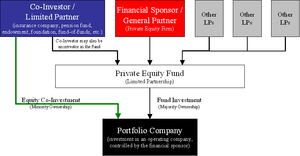PROCEDURE OF ISSUE OF SHARES
 Image via Wikipedia
Image via Wikipedia
Procedure of issue of shares
When company has been registered, the following procedure is adopted by the company to collect money from the public by issuing of shares:
Step-1
Issue of prospectus: When a Public company intends to raise capital by issuing its shares to the public, it invites the public to make an offer to buy its shares through a document called ‘Prospectus’. According to Section 60 (1), a copy of prospectus is required to be delivered to the Registrar for registration on or before the date of publication thereof. It contains the brief information about the company, its past record and of the project for which company is issuing share. It also includes the opening date and the closing date of the issue, amount payable with application, at the time of allotment and on calls, name of the bank in which the application money will be deposited, minimum number of shares for which application will be accepted, etc.






